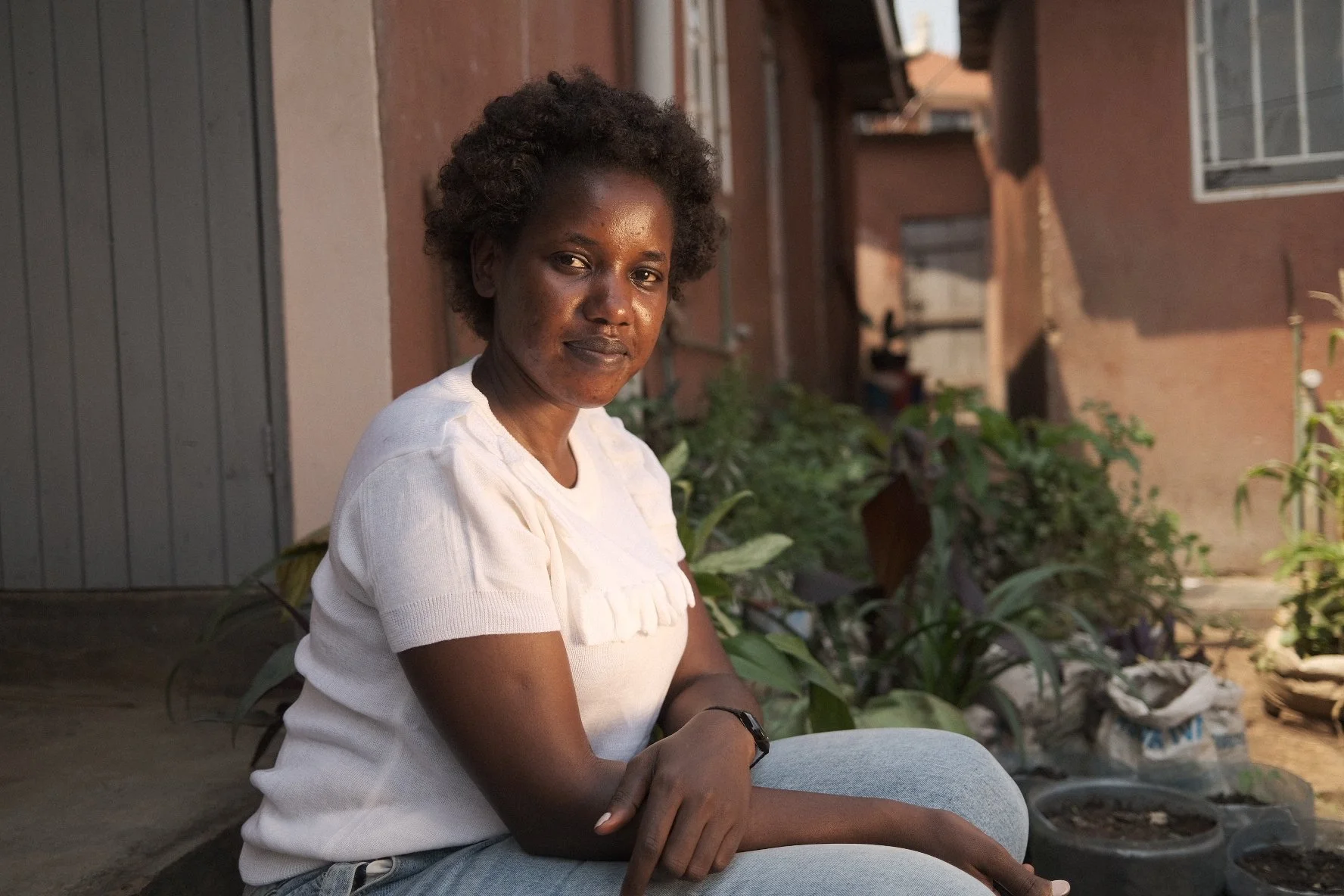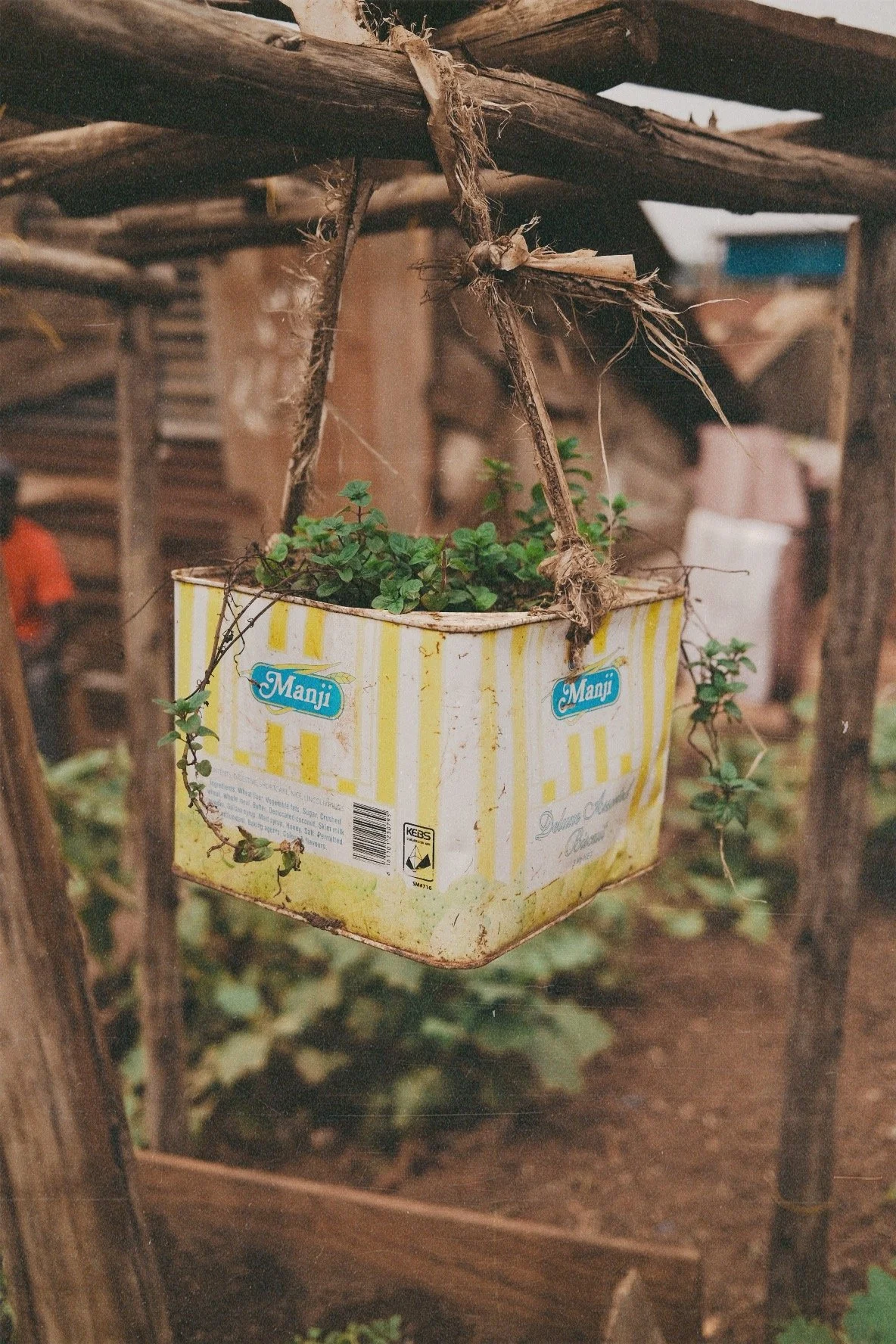The Shadow of Climate Change: Food Insecurity in Sub-Saharan Africa's Urban Slums
Look at your kitchen counter and find the olive oil. Perhaps you've also noticed its price has nearly doubled recently, in big part due to climate induced droughts. While this might mean adjusting your grocery budget or choosing an alternative - for most in developed nations, it's an inconvenience, not a crisis. But this price surge offers a window into a far more serious reality faced by millions living in the urban slums of sub-Saharan Africa, where climate change isn't a distant threat but a daily adversary in the struggle for food security.
Climate change has transformed from what felt long like an abstract concept to a concrete force reshaping lives, particularly in the crowded informal settlements of cities like Nairobi, Kampala, and Harare. Here, where up to 85% of families already face forms of food insecurity, rising temperatures and erratic rainfall patterns aren't merely environmental phenomena – they're direct threats to survival. So lets look at the causes and what we can witness on a grassroots level to combat it.
The connection between climate change and urban food insecurity reveals itself through three critical pathways: 1. a disrupted rural agricultural production, 2. volatile food prices, and 3. compromised urban infrastructure. Each represents a link in a chain of vulnerability that tightens around the poorest urban residents.
The Rural-Urban Connection: When Fields Fail, Cities Suffer
Peter Machokoto, a former farmer turned urban entrepreneur in Zimbabwe, experienced firsthand how climate change transformed his rural livelihood. His story represents thousands of others who have experienced it first hand as heat-weakened goats produced less milk, boreholes ran dry, and once-reliable crops withered in the field.
To get an idea of the scale: In Zimbabwe's eastern Manicaland province, a thirty-day dry spell in February 2024 devastated rain-fed crops, with local officials recording losses of up to 60% (Dreamtown was active in the region with a grant from the Danish Emergency Relief Fund (DERF) in direct response to the drought). And this scenario repeats itself across sub-Saharan Africa, where approximately 96% of agriculture depends entirely on rainfall. Without irrigation systems or technology buffers, farmers stand defenseless when rains fail to materialize. And it does not even has to be a big drought. Already the changes in rainfall pattern, that makes agriculture in those circumstances unreliable, create a big disruption for farmers.
And as climate change intensifies, these agricultural failures accelerate migration to cities. Young people abandon rural areas, heading to urban centers in search of alternative livelihoods. But rather than finding refuge, many discover that food insecurity has followed them to the city – merely taking a different form.
Urban Markets: Where Climate Change Meets Cash Constraints
In Nairobi's informal settlements, climate change manifests not as failed crops but as price shocks at local markets. When Kenya's once-reliable "long rains" become erratic, food trucks arrive half-empty in the city. For stallholders in Mathare and Korogocho, this scarcity triggers immediate price adjustments – sometimes tripling the cost of staples like kale overnight.
Unlike rural residents who might fall back on subsistence farming during hard times, urban slum dwellers face a stark mathematical reality: nearly everything must be purchased with cash. Studies show households in Nairobi's informal settlements buy approximately 90% of their food at the markets. When a day's wage suddenly buys only flour and salt instead of a complete meal, families face impossible choices.
The price volatility in these urban markets disproportionately affects the poorest residents. Food consumes up to 70% of household budgets in informal settlements, leaving precious little for other necessities. When climate shocks trigger price hikes, urban families hit a breaking point: rent must be paid, school fees come due, someone falls ill. In these moments, food becomes the flexible expense families cut back on to survive another day.
As an example: The 2019-20 desert-locust invasion hit Nairobi's food markets hard. One swarm the size of Paris stripped fields in the Rift Valley bare in hours, sending another tidal wave of price hikes into the city's markets. Such extreme events, increasingly linked to climate change, expose the fragility of urban food systems that depend on stable rural production.
Community Responses: Innovating Against the Odds
But communities react and adjust, often on a grassroots or even individual level, without broader government support. When we look at Dreamtown’s project Ghetto Go Green, we can see it first hand. The residents of Kampala's informal settlements demonstrate remarkable resilience and creativity. Residents have transformed their limited space into productive growing areas. Blue plastic barrels hoisted onto tin roofs or small spaces along the houses serve as makeshift gardens, yielding amaranth and tomatoes that supplement dinner plates and occasionally generate modest income.
Abdallah Mackey explained how urban farming has evolved from subsistence to small-scale commercial activity: "I didn't know that on a smaller scale, you can do farming and still have something to sell as well as something to eat." The income from his garden helps fund his education, creating a pathway toward longer-term stability.
In Kenya, in Mathare, one of the informal settlements, community kitchen bulk-cooked beans and posho (cornmeal porridge) for households after last years massive floods, leveraging wholesale prices to ensure at least one hot, protein-rich meal a day for participants. This collective approach to food preparation stretches limited resources further than individual cooking could achieve.
And community organizations like Komb Green Solutions, who have reclaimed former dump sites along the Nairobi River, transform them into productive urban farms that support feeding programs for vulnerable children. As Chris Waithaka explains, "For the urban farming, we use them to sell a little so that people can earn something. And also to sustain the feeding program for the kids, because they will not just keep on eating greens. No, we want something nutritional for them."
These grassroots initiatives highlight a critical insight: successful adaptation hinges on pairing climate-smart support with the creativity already alive in informal settlements. The ingenuity demonstrated in vertical tire planters, sack gardens, urban micro farms, hydroponic farming and community kitchens shows that solutions can emerge from within the most challenging environments.
Policy Imperatives: Scaling Local Solutions
But it is also part of the truth, that while community initiatives offer promising models, addressing food insecurity in urban slums requires coordinated policy action. Urban planning that incorporates food security considerations, investment in climate-resilient infrastructure, and strengthened social protection programs all play vital roles.
As an example: Kampala's decision to legalize urban agriculture through city ordinances demonstrates how policy can enable local food production. Rather than treating food growing as an illegal activity, the city now allows community groups to register rooftop gardens as micro-enterprises, unlocking small loans and basic extension advice.
Addressing food insecurity in urban slums also requires investment in basic infrastructure. Access to clean water, improved sanitation, and adequate drainage not only reduces health risks but creates better conditions for small-scale food production. The success of urban farming initiatives often depends on these fundamental services.
The Global Connection
The olive oil price surge, that began our exploration, serves as a reminder that food systems are globally interconnected. Climate impacts in one region ripple through markets worldwide. However, the consequences are not distributed equally. While Danish consumers might absorb higher olive oil prices with minimal lifestyle adjustments, residents of Nairobi's Korogocho face genuine hunger when maize prices spike.
This disparity highlights the need for global cooperation and solidarity in addressing climate change and food insecurity. Reducing greenhouse gas emissions, supporting climate adaptation in vulnerable regions, and building more resilient food systems are shared responsibilities that require concerted action.
For residents of sub-Saharan Africa's urban slums, climate change isn't a future threat – it's reshaping daily reality now. Their experiences offer both warning and inspiration: warning of the concrete human costs of environmental disruption, and inspiration in the resourceful responses emerging from within affected communities.
Next time you reach for that bottle of olive oil, let it remind you of our shared vulnerability and connection to food systems worldwide. But also remember the women cooking collectively in Nairobi, the rooftop gardens sprouting in Kampala, and the transformed dump sites yielding vegetables in Nairobi. These examples demonstrate that even in the most challenging circumstances, human ingenuity and collective action can create pathways toward greater food security in a changing climate.










